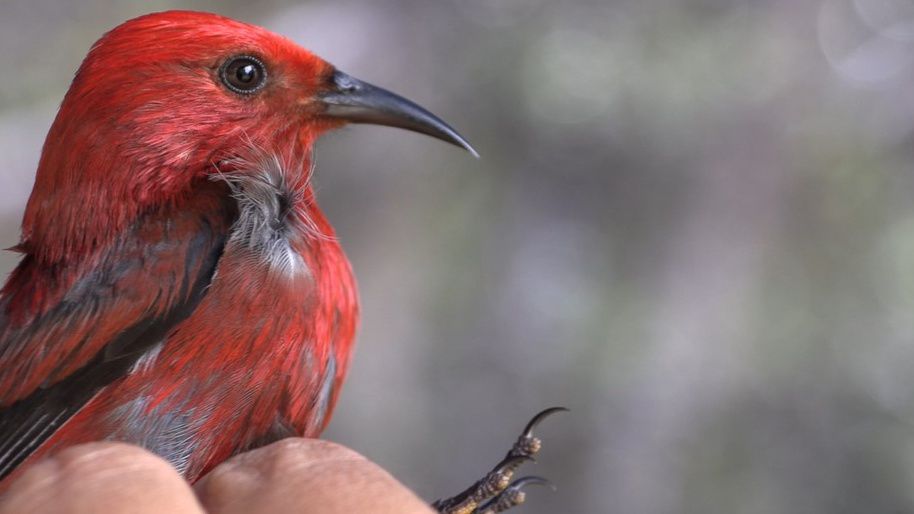The U.S. Fish and Wildlife and the Hawaii Department of Land and Natural Resources released a Draft Environmental Assessment on Friday to conduct wide-scale mosquito suppression to stop the spread of avian malaria on Kauai, according to a news release.
The Draft Environmental Assessment will be available for public comment until July 24.
Hawaii is sometimes called the extinction capital of the world, and native forest birds are currently nearing extinction. Many of Hawaii’s native birds once lived in lower elevation forests, but were killed off by mosquito-borne diseases. Now those that remain live in higher elevations, but climate change is expanding the range of mosquitos into these areas. A single mosquito bite can transmit avian malaria to native birds and kill them. On Kauai, 10 of 16 native honeycreepers have already gone extinct.
In order to save the remaining native forest birds, USFW and DLNR proposed using “mosquito birth control” to suppress mosquito populations within forested areas in Kokee and Alakai on Kauai.
The technique incorporates a naturally occurring bacteria called Wolbachia. Male mosquitoes carrying the Wolbachia bacteria are released into forests and mate with female mosquitoes, who lay eggs that do not hatch. Only female mosquitoes bite, so the male mosquitoes don’t spread avian malaria.
“Wolbachia is a bacterium that occurs naturally in 65% of insects that does not employ genetic engineering and does not involve or result in either mosquitoes or bacteria being genetically modified organisms,” said Earl Campbell, project leader for the Pacific Islands Fish and Wildlife Office, in a news release.
Other countries and U.S. states have used Wolbachia to suppress mosquito populations, including Australia, Mexico, Thailand, French Polynesia, California, and more.
For Maui, the Final Environmental Assessment for the same mosquito suppression technique was approved by the state Board of Land and Natural Resources in March. Small-scale pilot releases of Wolbachia-infected mosquitoes are currently taking place on East Maui.
If all goes as planned, small-scale releases will start on Kauai in the fall, according to USFW spokesperson Ivan Vicente. Large-releases may start on Kauai and Maui in 2024.
Comments to the Draft Environmental Assessment can be submitted:
Via email mosquitocontrol@hawaii.gov
Via mail, postmarked by July 24, 2023, to: Department of Land and Natural Resources, Division of Forestry and Wildlife, Attn: Mosquito Control Project, 1151 Punchbowl Street, Room 325, Honolulu, HI 96813
- In writing at the public meeting held on July 11, 2023, from 5:00 p.m. to 7:00 p.m. at Kauai Philippine Cultural Center, 4475f Nuhou St, Lihue, HI 96766
Michelle Broder Van Dyke covers the Hawaiian Islands for Spectrum News Hawaii. Email her at michelle.brodervandyke@charter.com.




